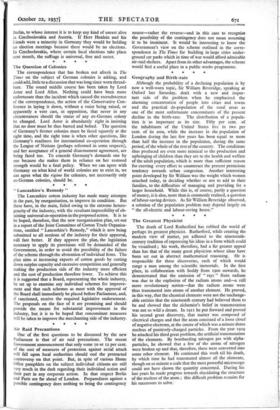The Greatest Physicist The death of Lord Rutherford has robbed
the world of perhaps its greatest physicist. Rutherford, while creating the modern view of matter, yet adhered to the nineteenth- century tradition of expressing his ideas in a form which could be visualised ; his work, therefore, had a far greater appeal than has that of the many great physicists whose ideas have been set out in abstract mathematical reasoning. He is responsible for three discoveries, each of which would range a man among the scientific immortals. In the first place, in collaboration with Soddy from 1900 onwards, he demonstrated that the emission of " rays " from radium was due to the explosion of the radium atoms and—a still more revolutionary notion—that the radium atoms were thus transmuted into atoms of another element. He proved, in this way, that the chemical elements were not the unchange- able entities that the nineteenth century had believed them to be and showed that the alchemist's belief in transmutation was not so wild a dream. In 1911 he put forward and proved his second great discovery, that matter was composed of electrical charges and that the atom consisted of a loose cloud of negative electrons, at the centre of which was a minute dense nucleus of positively-charged particles. From the year 1919 he attacked his third great problem, the artificial transmutation of the elements. By bombarding nitrogen gas with alpha- particles, he showed that a few of the atoms of nitrogen were broken up and that, therefore, these were converted into some other element. He continued this work till his death, by which time he had transmuted almost all the elements, though on so minute a scale that the most powerful microscope could not have shown the quantity concerned. During his last years he made progress towards elucidating the structure of the nucleus of the atom ; this difficult problem remains for his successors to solve.






























































 Previous page
Previous page